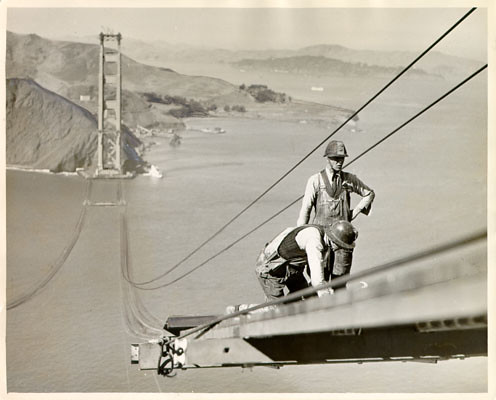 When you hear the word "community," what do you envision? I see people of all backgrounds, ethnicities, ages, and income levels. I see them laughing together. Learning together. Taking care of each other.
When you hear the word "community," what do you envision? I see people of all backgrounds, ethnicities, ages, and income levels. I see them laughing together. Learning together. Taking care of each other. Most of us don't live this dream--yet. Most of us experience community in isolation, moving through a small cluster of bubbles: Work. School. Neighborhood. Soccer. We spend most of our days with people who look like us, who share our culture, background, and class.
In the wake of the 2016 US election, I've been thinking a lot about the bubbles in which we live. Bubbles protect, empower, and insulate us. But they can also lock us into fear, judgment, and insecurity.
When we break out of these bubbles and build bridges across our differences, we build stronger communities. We bridge through experiences that bring together people from all walks of life, in shared celebration, respect, and learning. Research shows that social bridges decrease racism, increase public safety, and improve community health. Building bridges makes communities more equitable. Bridges shrink gaps in housing, health care, and quality of life. And they makes all our lives richer as we expand beyond the bubbles of our personal experiences.
That's why our museum, the MAH in Santa Cruz, focuses on social bridging. Rather than operating in a bubble of �art people� or �history people,� we strive to connect ALL people in our county. Our unique value is not in targeting people but bridging across differences. Our staff are matchmakers for unlikely partners across the county: engineers and folkloric dancers presenting at monthly festivals. Artists and activists exhibiting their work. Homeless adults and history buffs improving a historic cemetery. Business leaders and street performers designing a new community plaza on the museum's front porch.
These projects help people build bridges--and community. Museum visitors tell us that "meeting new people" and "being part of a bigger community" are two of the things they love most about our museum.
I take no satisfaction in the extent to which this election demonstrates how important and impoverished social bridging is in the United States. I take hope, courage, and perseverance from the knowledge that we can do it. More of us. More deeply. More often.
We've got some work to do. Cultural institutions, and museums in particular, have traditionally been bubbles of privilege. Our walls kept more people and ideas out as they let in. But we have the capacity to turn those walls into doorways. We have the potential to use the diverse, generative ideas within our walls as building material for bridges beyond our walls.
Building bridges doesn't mean capitulating or compromising. It means standing on one edge of a canyon and making a sincere effort to connect to people on the other side. Not to colonize them. Not to become like them, or ask them to be like you. Not to apologize for who you are. To build a bridge. To get to know them. To understand more about what life is like on their side. To cross over and intersect, on their turf and yours--until it becomes our bridge, and our canyon.
If you are curious about bridge-building, I encourage you to:
- Read. Check out Bowling Alone and Better Together, both by Robert Putnam. These books frame the concept of social bridging and offer both inspiring and dismaying examples from different sectors. Check out social psychology texts on "intergroup contact." Follow any of the many wonderful online resources produced by bubbles that are not your own.
- Learn more about the divides in your community. Be honest about what ledge you stand on, and learn what you can about those on the other side. Don't waste your energy learning about divides that you can't or won't bridge. Learn about the ones you can affect. Learn about the people down the street about whom you know nothing. They read different news stories than you, go to different coffee shops than you, dream different dreams than you. Learn about them.
- Figure out what you can do to join the informal union of bridge builders in your community. Who's doing the work? To what end? Do people in your community need bridges to celebrate together across differences? To tackle a big issue? To talk things out? To look each other in the eye without fear?
We build bridges in full knowledge that rubbing up against new ideas and people is uncomfortable. It's not as marketable or profitable as reinforcing the existing bubble. But our comfortable bubbles lie to us. They are mirrored on the inside. They keep us from seeing the whole world. They can make us selfish and fearful.
I believe that culture workers can be bridge-builders. It's not easy to step off your ledge onto an uncertain bridge. It's even harder to invite others to do so. But when we do, we see more clearly. We open our hearts to the beautiful, breakable world. We build the bridges that form the backbone of the compassionate, complex, collective communities we deserve.


